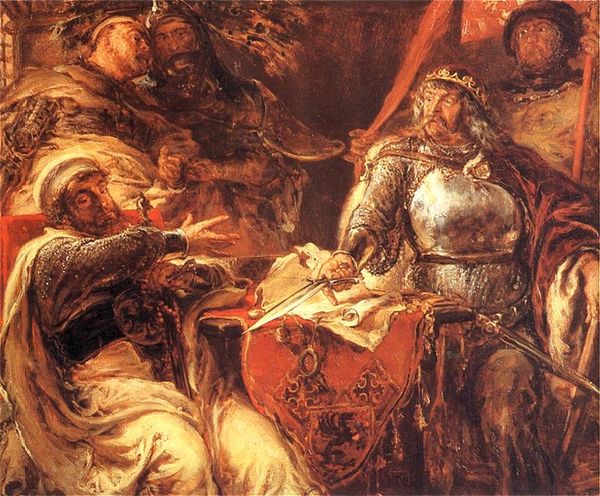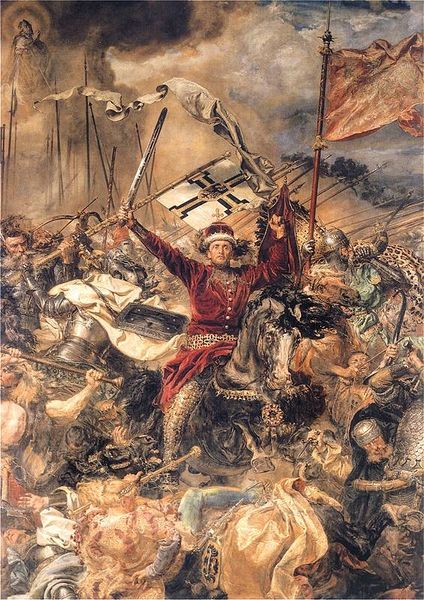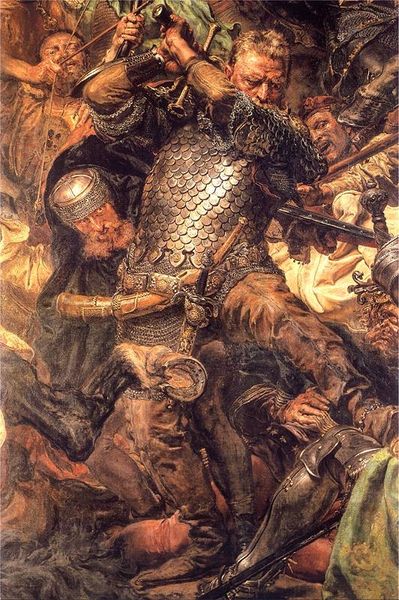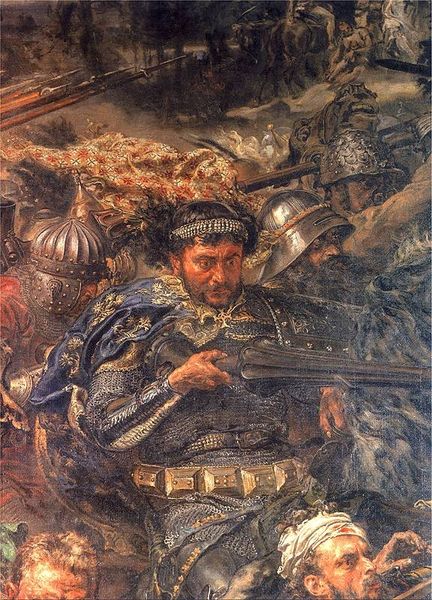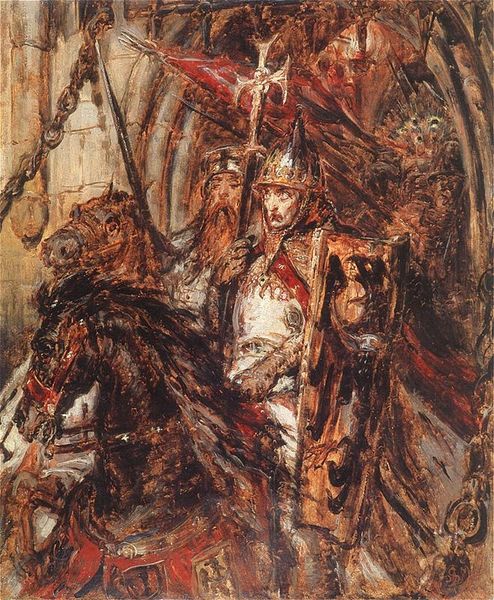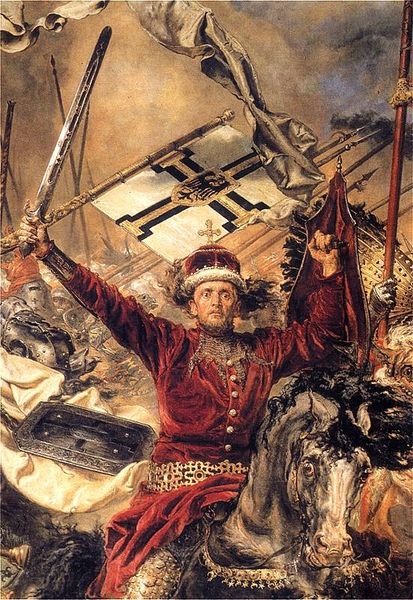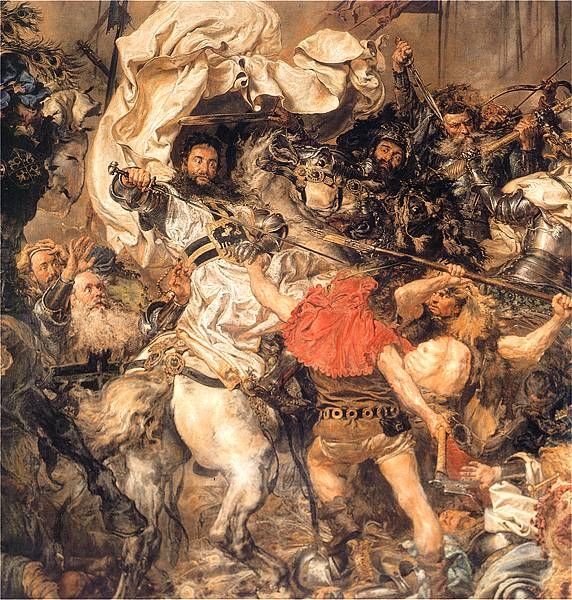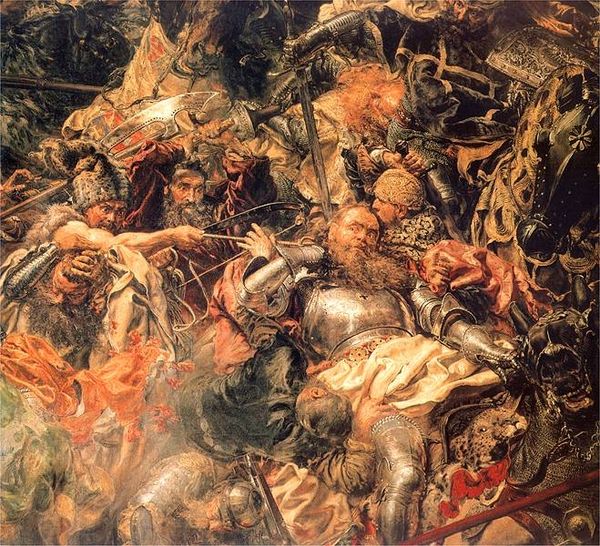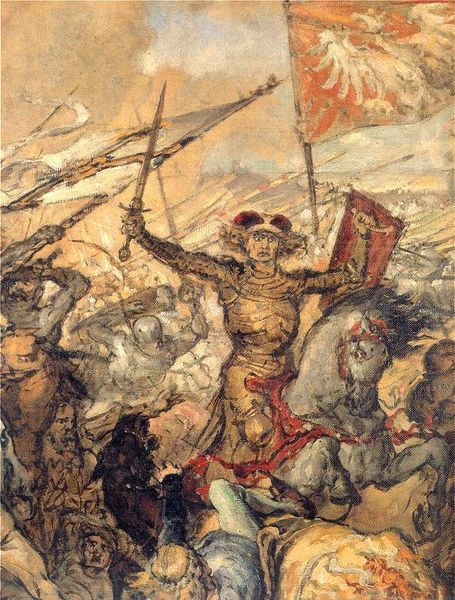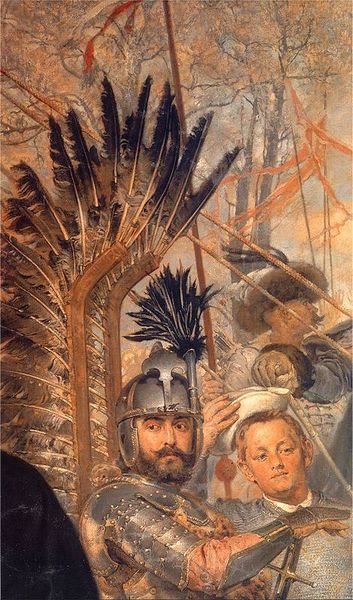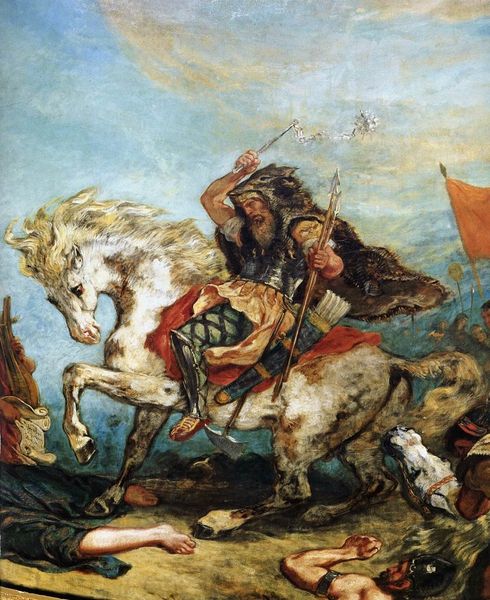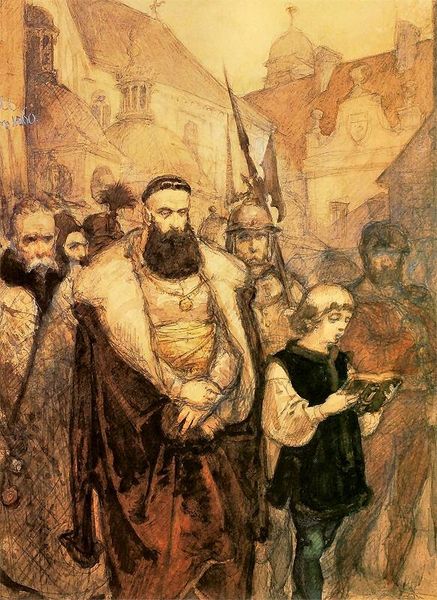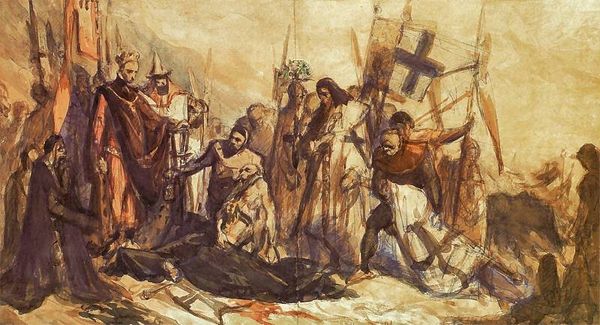
painting, oil-paint
#
painting
#
oil-paint
#
war
#
figuration
#
oil painting
#
famous-people
#
romanticism
#
genre-painting
#
history-painting
#
realism
Copyright: Public domain
Editor: This is a detail from Jan Matejko's "Battle of Grunwald," an oil painting depicting, well, battle. The chaotic composition and the expressions on the faces—a mix of fear and rage—are quite overwhelming. How do you interpret this kind of history painting? Curator: It's impossible to view Matejko's "Battle of Grunwald" in isolation from its historical context. Poland in the late 19th century was a nation without a state, partitioned between empires. Matejko used historical narratives to foster a sense of national identity and pride, almost as a form of resistance. Who do you see represented in this resistance and how effective do you think they were in communicating his message? Editor: I hadn’t considered it as a form of resistance. Looking at the painting now, there's definitely a romanticized heroism. I guess I always saw that style of historical paintings as glorifying conflict but I never really thought of it as a form of cultural protest or social commentary. Curator: Exactly. He's using the past to comment on the present. Moreover, look at *who* is being celebrated here. Is it only kings and nobles, or are there figures representing the common soldiery as well? Consider what that says about Matejko's vision for Polish identity – who gets to be a hero in his narrative? What purpose did history paintings serve then? Do such history paintings risk simplifying or misrepresenting the past? Editor: It definitely does appear to focus on specific heroic figures; It creates a national identity, but at the expense of nuance? But these choices seem deliberate for what the artist was trying to say at that moment. Curator: Precisely. And it is this interplay between historical event, artistic interpretation, and socio-political context that makes history painting such a potent, and often problematic, genre. We have to remember that the narratives he presented were crafted, carefully constructing what it means to be "Polish". Editor: That really shifts how I see Matejko’s choices now. Thanks.
Comments
No comments
Be the first to comment and join the conversation on the ultimate creative platform.
